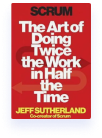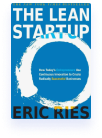In today's IT project landscape, effective resource management has become a key success factor. Resource management process is not just a tool, but a necessity for achieving project goals and optimizing team performance. Organizations that master resource management g
Agile Project Management in 2025: Effective Projects
The article covers flexible project management methods like Agile, which help teams quickly adapt to changes and boost productivity. It highlights the key benefits of Agile in 2025 and offers tips on implementing Scrum and Kanban for successful project management.
Key takeaways
Agile Project Management is based on an iterative process that allows teams to rapidly respond to changes and adapt to customer needs.
Methodologies like Scrum and Kanban help improve team collaboration and make project management processes more flexible.
Agile enhances team productivity by providing a clear work structure and flexible task allocation. Core principles of Agile Project Management.
Introduction
The world of project management is constantly evolving, and flexible methodologies like Agile Project Management have become the cornerstone of effective project handling in 2025. This approach allows teams to quickly adapt to changes, improving productivity and flexibility in project execution.
Core Principles of Agile Project Management
Agile Project Management focuses on flexibility and quick adaptation. The following principles lie at the heart of Agile:
- Iterative Process. Projects are broken down into short cycles, or sprints, allowing teams to react to changes more quickly and adjust the course of work.
- Emphasis on Teamwork. Agile promotes close collaboration and self-organization within the team, improving communication and accelerating task completion.
- Continuous Feedback. After each sprint, the team receives feedback, which helps in quickly resolving issues and adapting the project approach.
Benefits of Agile for Teams in 2025
1. Flexibility and Adaptability
One of the main advantages of Agile is its flexibility. Traditional project management methods, like Waterfall, don't always allow for easy changes during a project. However, with Agile, teams can quickly adapt to changing client requirements or market conditions. Methodologies like Scrum and Kanban offer a structure that makes task management more flexible.

2. Improved Team Collaboration
Agile encourages close collaboration among team members. Teams work in iterative cycles, allowing them to quickly identify and resolve issues. Agile teams use iterative processes that enable them to break tasks down into smaller, more manageable stages. This helps improve communication and reduces time spent on task completion.
3. Increased Productivity
With clear organization and flexible project management, teams can boost their productivity by breaking tasks into shorter sprints. This helps focus on priority tasks and achieve goals faster. Agile Project Management allows project teams to react more swiftly to changes and minimize downtime.
Interesting fact 
The term "Agile" first appeared in 2001 in the Agile Manifesto, a document created by 17 software professionals. They realized that traditional project management methods weren’t suitable for fast-paced software development. Instead, they proposed Agile, a people-centered and flexible approach that emphasizes collaboration over rigid planning.
How to Implement Agile in Your Company
- Choose the Right Methodology
First, it's essential to choose the right Agile methodology, whether it's Scrum, Kanban, or a hybrid of both. Scrum is ideal for projects where speed and constant feedback are critical. Kanban, on the other hand, helps visualize tasks and improve task management. - Build an Agile Team
Creating a self-organizing team is key to Agile success. It’s important that the team includes not just technical specialists but everyone involved in the product creation process. Agile teams are built on principles of flexibility and close collaboration. - Implement Iterative Processes
To effectively use Agile, it's crucial to break the work into cycles or iterations. Each cycle should conclude with achieving a specific result. This allows the team to quickly adapt to changing conditions and adjust their actions based on feedback.
Agile’s Impact on Team, %
The chart shows how using Agile improves team flexibility, enhances collaboration, and increases productivity during project execution.
Conclusion
Agile Project Management is not just a trendy methodology but an essential approach to project management in 2025. Its flexibility, speed of response, and close collaboration make it ideal for modern teams. If your team wants to implement Agile, the Taskee.pro platform will help you efficiently manage projects and achieve outstanding results.
Recommended reading 

"Agile Estimating and Planning" by Mike Cohn
Practical techniques for estimating and planning in Agile projects to help teams deliver on time and within budget.
On Amazon
"Scrum: The Art of Doing Twice the Work in Half the Time" by Jeff Sutherland
Insights from Scrum's co-creator on how this framework boosts productivity and team efficiency.
On Amazon
"The Lean Startup" by Eric Ries
A guide to building successful startups using Lean principles like rapid experimentation and customer-focused product development.
On Amazon






